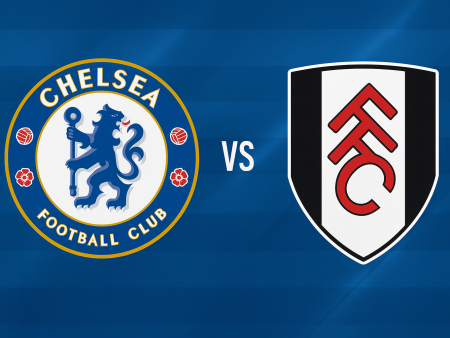Exploring Tactical Innovations: The Return of Inverted Fullbacks and Bruno Guimarães’ Deep-Lying Playmaker Role
Modern football is defined by its ever-shifting tactics and player versatility. In the latest edition of our “Game of Numbers” analysis, we focus on two standout tactical storylines from the start of the European season: Manchester City’s successful re-deployment of inverted fullbacks, and Bruno Guimarães’ impressive display in a deep-lying playmaker role for Newcastle United. Let’s break down how these tactical trends shaped recent performances and what they reveal about the evolution of roles in today’s game.
Manchester City’s Tactical Flexibility: Inverted Fullbacks Against West Ham
Manchester City’s adaptability under Pep Guardiola remains unmatched, and their match against West Ham United perfectly illustrated their tactical prowess. Historically, City’s system has relied on fluidity in attack and inventive roles for their fullbacks. Last season, the presence of creative midfielder Bernardo Silva led to fewer inverted runs from City’s fullbacks, as he occupied central build-up spaces. However, with Silva absent from the starting XI, Guardiola returned to the 2+3 build-up structure, reintroducing Joao Cancelo and Kyle Walker as pivotal inverted fullbacks alongside Rodri.
This 2+3 formation in the first phase of build-up positioned Cancelo and Walker closer to Rodri, drawing West Ham’s defensive midfielders and wingers centrally. As a result, City found themselves with increased width on the flanks, exploiting the newly vacated channels to facilitate attacks through Jack Grealish and Phil Foden. City’s ability to lure West Ham’s wide players inward created a domino effect - with the Hammers compacting narrowly, leaving space on the flanks for City’s wide attackers.
In advanced phases, Cancelo was particularly influential, progressing into the left half-spaces to link with the midfield and initiate incisive passes. He recorded 129 touches and orchestrated several forward plays, continually breaking West Ham’s defensive lines. At times, Walker would move inside individually, creating a makeshift double pivot to maintain ball security and offer more variety to City’s approach.
The tactical ploy forced West Ham’s defensive unit to overcommit to central spaces, leaving City’s wingers and overlapping players with ample room to attack. This constant switching of play stretched the Hammers’ shape and allowed Rodri to capitalize on freed-up zones in front of the defense. In moments where West Ham tried to press higher, Rodri found space to thread balls into Kevin De Bruyne, who then exploited these openings to assist Erling Haaland for City’s goals.
Guardiola’s use of inverted fullbacks was not a novel invention, but the intelligent adjustments and timing, depending on personnel and opponent, highlight the adaptability that defines Manchester City’s tactical identity. The decision to pivot back to this style underscores the importance of tailoring roles to available players and exploiting specific weaknesses in the opposition’s setup.
Bruno Guimarães: Redefining the Deep-Lying Playmaker at Newcastle
When Bruno Guimarães joined Newcastle United, he arrived with a reputation as a versatile midfielder capable of box-to-box contributions. However, the first match of the new campaign demonstrated his growth into a technically adept deep-lying playmaker - a role previously occupied by Jonjo Shelvey.
Shelvey made a name for himself with precise long-range passing, averaging a career-best 67.5% completion rate for long passes and attempting nearly 14 long balls per 90 minutes in the 2021-22 season. His preference for high-risk, direct passes over short combinations made him unique among Premier League holding midfielders. While Shelvey was adept at switching play and accessing wide areas, he seldom offered the incisive, line-breaking passes necessary to open up deep defensive blocks.
Enter Bruno Guimarães, who started as Newcastle’s “number six” and immediately imposed his style of play. Against Nottingham Forest, Guimarães completed 13 passes into the final third and created three goal opportunities across 96 touches. His knack for drifting into optimal receiving positions allowed him to maintain control and seamlessly advance Newcastle’s play.
Guimarães was particularly effective at linking up with Miguel Almirón, consistently slotting passes between the lines and leveraging Almirón’s pace to attack spaces behind Forest’s defense. He also recorded 10 progressive carries and completed five out of eight dribbles, showcasing his value in advancing the ball via both passing and runs from deep.
While Guimarães attempted fewer long passes than Shelvey, with only nine on opening day and an accuracy of 44%, his proficiency with short and medium-range distribution, combined with his line-breaking dribbling ability, added an extra dimension to Newcastle's build-up. In effect, he played the deep-lying playmaker role in a more dynamic manner, akin to the style of Mahmoud Dahoud at Borussia Dortmund - emphasizing progression through tight spaces and initiating attacks rather than relying solely on long passing.
Guimarães’ performance against Nottingham Forest not only helped Newcastle secure a 2-0 victory but also signaled a shift toward a more progressive and technically advanced approach at the base of midfield.
Key Insights and Tactical Takeaways
This analysis of early-season performances highlights several important trends in elite football:
- Manchester City’s willingness to fluctuate between systems and fullback roles demonstrates the value of tactical fluidity, especially in response to squad rotation and opposition tendencies.
- The use of inverted fullbacks creates unpredictability in the build-up, disrupting defensive schemes and unlocking wide areas for attackers.
- Newcastle United’s evolution in midfield roles, with Bruno Guimarães’s blend of passing range and dribbling power, points towards a future where defensive midfielders are not just anchors but dynamic creators able to progress play through multiple avenues.
Conclusion
As football continues to evolve, player roles and tactical expectations are being redefined every season. Manchester City’s adaptive approach and Newcastle’s reshaping of the deep-lying playmaker demonstrate how subtle tactical tweaks can deliver significant on-pitch advantages. Observing these developments offers a window into the innovative coaching and individual brilliance that set top teams apart. As the season progresses, it will be fascinating to see how these trends further unfold across Europe’s elite leagues.













